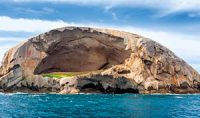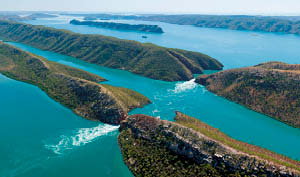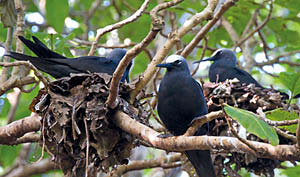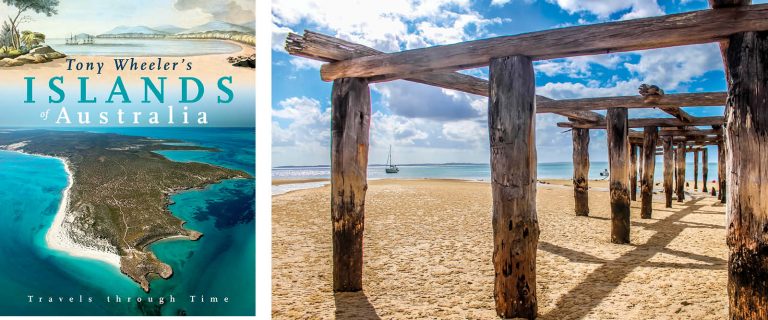No-one knows for certain what fate befell Captain James Fraser after his ship, the Stirling Castle, carrying mainly spirits, foundered on a reef 200kms north of what is now known as Fraser Island off the Queensland coast in May 1836.
He and his wife Eliza had taken to the longboats with 11 other survivors of the wreck to what was then known by the local Butchulla indigenous population as K’Gari, which means “paradise”.
Reports at the time suggested that the survivors were captured by the local tribe and Captain Fraser later died from spear wounds or malnutrition.
Even more mystery surrounds the fate of Eliza, who may have been saved from the natives by an escaped Irish convict who had been living with the islanders for some years.

But she later claimed, after the group was eventually rescued by a band of European soldiers, that she had been captured and severely treated by the local natives during her ordeal.
Travel guru and Lonely Planet co-founder Tony Wheeler recounts the story in his spectacular new book, Islands of Australia: Travels Through Time and concludes that there are many conflicting versions of what exactly happened to Eliza.
“Whatever the case, Eliza Fraser made a considerable career from recounting the tales of her six-week ‘captivity’ and, sadly, public anger probably contributed to the subsequent decimation of Fraser Island’s original inhabitants.”
Eliza died in Melbourne after being struck by a carriage in 1858 continually denying reports by other survivors that they were not “captured” of tortured by the Butchulla (or Badtjala) people but generally treated well.
But their versions came too late to save the island’s population from the butchery that was to follow.
In his introduction to this brilliantly illustrated and fascinating photographic/travel/history book, Tony Wheeler outlines that Australia can boast more than 8,000 islands, well ahead of the Philippines (7641) and the entire Caribbean which has around 7,000 islands including 28 different countries and dependent territories.
Wheeler takes the reader through a colourful island-hopping tour around our vast coastline, stopping off at places that have been chosen for their natural beauty, their unique fauna and their diverse indigenous and European histories.
But it’s also the intriguing stories of survival and shipwreck which involve some of our most famous islands that provide a graphic glimpse into the early days of colonisation.
One of the more tragic tales involves a settler family, Robert and Mary Watson, who built a brick and stone cottage at rugged Lizard Island’s Watson’s Bay in the far north of the Great Barrier Reef.
There they began harvesting beche-de-mer (sea cucumber) in early 1881.
Wheeler writes: “Mary’s husband and his partner had left her with the Watsons’ baby and two Chinese servants while they went to search for new gathering grounds, when an Aboriginal group arrived on the island and killed Ah Leong, one of the servants.
“Ah Sam was also speared and Mary decided to flee, paddling off with her baby and her wounded houseboy in an iron tank used for boiling the beche-de-mer.
“Four months later their bodies were discovered on Watson Island, 60kms north-west. They had died of thirst. It’s possible, that her unhappy end may have come about because they unwittingly strayed into a sacred area.”
Wheeler also relates the story of Australia’s only known pirate, known as Black Jack Anderson, who in the mid-1820s, sallied out from Middle Island in the WA’s Recherche group to attack vessels plying between Adelaide and Albany.
The former African-American sealer, terrorised shipping for 10 years before being murdered by his own crew.
“Spanish gold being in somewhat short supply in the Recherche Islands, seal skins were Black Jack’s usual plunder,” writes Wheeler.
Like the book’s author himself, It’s impossible for me to do justice here to the rich history, cultural development and spectacular geography of Australia’s widely-strung islands.
But the reader can’t help but become involved in the colourful background to many of our most famous islands.
For example, in 1777 on Captain Cook’s third voyage, his 22-year-old sailing master on board the Resolution was the soon-to-be infamous William Bligh when they were moored in Bruny Island’s Adventure Bay off Tasmania’s rugged northern coastline where Cook had carved his initials into a tree which survived until a bushfire in 1905.

Wheeler writes: “In 1788, Bligh was again anchored in Adventure Bay, this time commanding HMS Bounty en route to Tahiti and the most famous mutiny in history….
“Today, it’s no surprise that Adventure Bay’s interesting little Bligh Museum of Pacific Exploration is named after the unfortunate explorer, navigator, naval officer and colonial administrator.”
Wheeler also traces the bloody history of the Bass Strait islands of Flinders and King where huge populations of indigenous peoples were slaughtered by European sealers leaving only a few hundred to migrate to the Tasmanian mainland.
Today, he points out, Flinders Island’s population engages in fishing, farming and looking after the tourists who flock there to explore its history.
Wheeler also visited some of the islands famous for their prolific birdlife including the Hunter Group situated south of King Island.
Its most famous is Albatross Island, home to as many as 5,000 pairs of ‘shy albatross.’ They were almost slaughtered into extinction in the late 1800s to early 1900s by settlers wanting their sought-after feathers.
Also inhabiting Tasmania’s Furneax Group are the thousands of short-tailed shearwaters or muttonbirds, once harvested by the local Aboriginal population, who return to their nesting sites in late September, early October after migrating to the northern hemisphere and flying in a giant figure eight around the Pacific, as far north as the Arctic waters off Alaska and Siberia.
Another well-known bird habitat, is Queensland’s Heron Island which hosts more than 100,000 white-capped noddy terns that nest each year in the island’s Pisonia trees.

Also found on Heron Island are green, loggerhead and hawksbill turtles, whose hatchlings make a death-defying sprint from their egg mounds down to the relative safety of the water’s edge….where many fall victim to the waiting crabs and seagulls.
Industries also flourished on the multitude of islands among them timber, seals and fish and in the far north, the Torres Strait Islands became the centre of the pearling industry with mother of pearl replacing beche-de-mer as the main economic attraction with the first shipment unloading in Sydney in 1869 which sparked a rush for the valuable shells.
Wheeler’s majestic volume also takes readers on a “visual journey” of the many eco-resorts, pristine beaches, and dive sites to guano mines, colonial prisons and subantarctic volcanoes.
If you’re planning a trip to any of Australia’s far-flung or nearby islands, this book is a must.
And you will also find out why the Whitsundays should really have been called the Whitmondays!
*Islands of Australia: Travels Through Time, by Tony Wheeler. NLA Publishing. Available now. RRP $39.99.
Main picture Picturesque wooden pier structure on Queensland’s Fraser Island….now famous for its tourists and dingoes but which had a dark past.
‘




